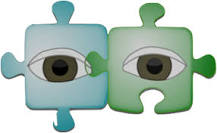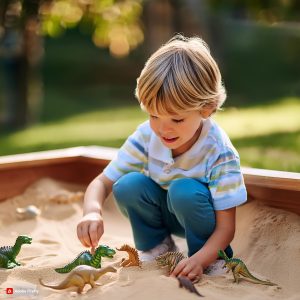2 The Role of Observation and Documentation
One of the cornerstones of a high-quality early childhood education program is the practice of observing, documenting and assessing children’s development. According to NAEYC (2009), in order to make formative decisions that will guide what goes on in an early learning program, there needs to be an organized system in place to collect information. When we record our observations and collect data, we “hold in memory the actions, nonverbal communication, or comments that seem to be significant to children’s thinking” (California Preschool Program Guidelines, 2015 p. 46). When we document children’s learning and collect key artifacts, we create tangible evidence that we can share with the children and their families, along with administrators and stakeholders. But why is this important? Why do we observe children?
1. To Monitor Children’s Development
With each observation, educators are listening to how a child speaks and if they can communicate effectively; they are watching to see how the child plays and interacts with their peers; and they are recording how the child processes information and problem solves. By monitoring a child closely, not only can we observe how a child grows and develops, but we can also track changes over time. More importantly, we can identify children who may not be developing as we might expect given our knowledge of child development and when significant milestones tend to emerge.
2. To Identify Red Flags
Building on the reason above, if a child doesn’t demonstrate certain skills according to when most children do, this may be cause for concern, and this is what we call a “red flag.” In these cases, educators would observe that child carefully to get a clear understanding of what the current skill level is and whether the child may not be progressing as we might expect. Through this careful observation, educators can detect early signs of developmental delays, learning disabilities, or behavioural issues. Recognizing these signs early allows for a timely response, and this is important because early identification and intervention can significantly improve outcomes for children with disabilities.
3. To Facilitate Responsive Approaches
Observing children allows educators to be responsive to each child’s unique needs and interests. By paying close attention to how children engage in different situations and with different experiences and materials, educators can adapt their approaches to ensure they’re providing children with the support they need and creating learning opportunities they will enjoy and be challenged by. Also, in situations where children may not be feeling well, being careful observers ensures that we are more attuned to small clues that serve as indicators that there might be something amiss. For instance, if a child who is normally very exuberant is strangely quiet one morning, or if they are vigorously rubbing their eye that appears extremely red when you take a closer look, these are situations that would require you to contact the parents to discuss your observations and possibly have the child return home.
Ponder This
Educators who listen and watch, observe how children play with others and interact with their environment. This information can inform what is needed or missing from the classroom. How they approach and engage will indicate their problem solving skills, thinking abilities and interests.
4. To Build Strong Relationships
Observing children allows educators to develop a deeper understanding of each child’s personality and how they engage with others. This knowledge helps educators interact with children in ways that the child is most comfortable with, which promotes meaningful relationships between the educator and the child. Educators can also support connections among children by identifying potential challenges that may impact their relationships with one another and helping them navigate social situations based on their individual needs.
5. To Support Reflective Practice
Observing children allows educators to engage in reflective practice because they can assess and revise their approaches. By reflecting on their observations, educators can identify what is working well and what may need to be adapted. This process not only helps with professional growth, but children also benefit because educators are always trying to improve their ideas, room setup, ways of interacting with others, etc.
6. To Enhance Communication with Families
Observations provide a concrete basis for communicating with families about their child’s development and learning experiences. Sharing specific examples and detailed observations helps families understand their child’s progress and any areas that may need attention. This transparency nurtures an open and collaborative relationship between educators and families. When educators share their observations with families, this ensures that families are informed and can provide support at home, creating consistent support for the child. Also, when families are invited to share their observations of their child at home, it helps them to feel much more actively involved and it also provides educators with a more well-rounded understanding of the child outside of the early learning setting.
Indigenous Perspective
Like all families, Indigenous families are concerned about their child’s well-being and growth. How this is shared and received may be different. Parents may seek out close relatives to find answers to troubling questions before seeking a person from the early learning site. Parents may seek help from a close relative or elder. Respecting and understanding the perspective of the family is critical.
Etuaptmumk– two-eyed seeing approach- refers to learning to see from one eye with the strengths of Indigenous knowledges and ways of knowing, and from the other eye with the strengths of Western knowledges and ways of knowing… and learning to use both these eyes together for the benefit of all.

Collaborating with families is essential in early learning environments. By sharing our observations, documentation and seeking their insights, we not only show respect for their values and culture but also ensure that our interpretations of the child’s behaviors and interests are accurate. This collaboration helps tailor our responses to be relevant to the child’s cultural context, which is critical for their development. By engaging families in this process, educators gain a deeper understanding of the child’s cultural and linguistic background. This understanding enables us to make informed decisions that support the child’s overall development more effectively. Ultimately, a collaborative approach between educators and families creates a supportive environment that nurtures the child’s growth and learning in a holistic manner. This approach allows educators to gain a deeper understanding of the child’s cultural and linguistic background and make informed decisions that support the child’s overall development.
Ponder This

Let’s consider a hypothetical scenario in an early learning program to help us see the value of some of the different reasons we observe children. Imagine that after several days of observing Wyatt, you notice that he always goes to the sandbox to play with dinosaurs during outside play. He is very focused on the dinosaurs as he builds walls of sand around them, buries them, and then digs them up. He seems undistracted by the other children who are playing on the nearby structure and running with the soccer ball.
Is Wyatt interacting with other children?
How is Wyatt using the dinosaurs?
How can you use this information to support Wyatt during inside play?
Adobe Firefly, 2024 (https://firefly.adobe.com/)
Based on Wyatt’s interest in dinosaurs, but also in response to his apparent preference for solitary play, you decide to invite Wyatt and some other children to the art center that you have set up with a long piece of butcher paper on the table, a variety of dinosaurs, paint brushes, and some trays with lots of colours of paint. You observe the children as they paint, some using the dinosaur feet to stamp onto the paper, and others choosing to create big green dinosaurs. You hear children chatting with one another as they compare their creations, yet Wyatt is very focused on adding detail to the T-Rex he’s painting. Your idea to create a social situation where Wyatt would hopefully engage with other children hasn’t quite turned out as you envisioned, so you crouch down between Wyatt and another child and say, “Wow, Ben! You’re painting a T-Rex just like Wyatt. What do you think they might be saying to each other? Maybe they’re planning a party!” Ben and Wyatt giggle at your silly suggestion, and Ben says, “No! Dinosaurs don’t go to parties! They’re probably looking for food.” Then Wyatt says, “Yeah, they’re hungry for a triceratops!” The conversation about what the dinosaurs are going to eat continues, and you can see that the two children both have a shared interest.
Later on, when the children go out for recess and Wyatt is heading to the sand to play with the dinosaurs, you say, “Hey, I wonder if Ben might want to help you build some structures for the dinosaurs. Should we go ask him?” Wyatt finds Ben and, with your help, asks Ben to play with the dinosaurs, and the two of them settle in the sand together, talking about what kind of structure their dinosaurs would like based on what they know about the creature. At the end of the day, you jot a little note in Wyatt’s agenda to let his parents know about the fun Wyatt had painting and playing in the sand with Ben. Wyatt’s parents ask him about his new friend, and after Wyatt enthusiastically recounts the details of his day, his parents suggest setting up a playdate with Ben that weekend. On Monday morning after a very successful playdate, Ben and Wyatt seem joined at the hip. They tell you all about the dinosaur-shaped sandwiches Wyatt’s mom made and the fossil-digging kit that Ben brought over for them to play with.
A lot of important things happened in this scenario. You were initially observing Wyatt, monitoring his development and noting his interests and how he interacted with others. After seeing him playing on his own over a few days, there was a little red flag you hadn’t noticed earlier regarding his social development. Was Wyatt uncomfortable playing with others? Perhaps he didn’t know how to initiate play with someone. This led you to respond to Wyatt’s interest in dinosaurs to create an experience that would hopefully promote the skills you were concerned about and that you knew he would enjoy. You continued to observe and noticed that Wyatt might need a little support, so you responded accordingly to facilitate conversation between the two children. You shared your observation with Wyatt’s family which not only strengthened your relationship with them, but it also allowed them to further support Wyatt’s new friendship.
This whole process provided you with a wonderful opportunity to reflect on your approach. You identified that the strategy you used with Wyatt was effective, but you also realized that Wyatt had actually been avoiding interacting with other children for quite some time and you just hadn’t noticed. As a result, you decide to create a notebook where you will document your general observations on three children each day at the start of each month which will ensure you respond to any red flags much more quickly.
Wrap it Up
We can have pre-conceived ideas about children; when we watch , listen and learning from children, the interpretations we articulate and the decisions we make will impact children’s relationships with others and their environment.

